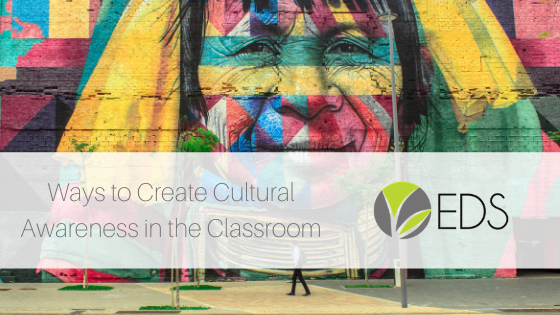Schools should be a safe space for students to come and feel welcome regardless of their culture. It is pivotal for teachers and staff to be a student’s ally. Based on the recent increase in anti-Asian violence, now more than ever, teachers and staff should be bringing light and addressing cultural diversity within the classroom by establishing cultural awareness. It can be challenging to figure out ways to incorporate this much-needed element into the classroom, however, we’ve put together some tips to help elevate cultural awareness within your school.
Understanding Culture
(Understand)
Creating cultural awareness first begins with understanding what culture means. There are a lot of factors that go into how someone defines their culture. Often culture can be broken down into people’s beliefs, values, language, societal roles, etc. You can turn the breakdown of culture into a fun and interactive activity for your students by giving them the opportunity to share about their cultures. As you get to know your student’s backgrounds, be aware that you’re being culturally sensitive while discussing their cultures with them. You should celebrate the differences in their traditions, beliefs, and social behaviors. Your goal is to foster inclusion within the classroom.
Do Your Research/Educating Yourself
(Research)
Taking the time to educate yourself on the basics of the different cultures that are in your classroom will help build a strong foundation for you to create cultural awareness in your classroom. From there you’ll be able to help assist students with their journey of learning and understanding other cultures. An activity you can use to get students to also participate in researching other cultures is assigning students to research and learn about other cultures from all around the world. Break the students down into groups and assign them a continent and have them create a presentation about the various cultures that originate from that continent. Then have them share what they’ve learned with the class. This will allow for an open discussion for students to ask, learn and gain new perspectives on other cultures.
Incorporating Culture into Lessons
(Integrating)
An efficient solution to create cultural awareness is by integrating the topic into your curriculum. One way to do this is by using a platform like our Onspire Program, which is specifically geared toward cultural awareness and social-emotional learning (SEL). EDS recognizes that teachers and staff may not have the time to dedicate to broadening student’s understanding of cultural diversity, which is why we created a software that can.
Our program gives schools the ability to have students complete lessons on their own, have staff lead lessons on these issues, or blend the program with staff instruction and self-directed learning. C3: Compassion, Civility, and Cultural is a module in Onspire that teaches harassment, intimidation, and bullying prevention; civility and compassion; and cultural awareness. As a literacy-based curriculum, C3’s characters from the fictional Pleasant Valley School “grow” with your students as they journey together from preschool to grade 8, experiencing developmentally typical situational storylines that provide your students with real-world learning experiences.
By having relatable characters and storylines, the lessons become more memorable and are therefore more likely to stick with your students as time goes on.
Summary
All in all, as we make social emotional learning part of a regular curriculum, we are creating a positive domino effect of student advocates for anti-bullying, cultural awareness, and compassion.
Because we come from the world of education, we also realize implementing new programs is easier said than done, which is why we’ve designed our systems to be easily integrated into your existing language arts literacy and health programs. Schedule a free demo with our team today so that you can see the tools in action.

